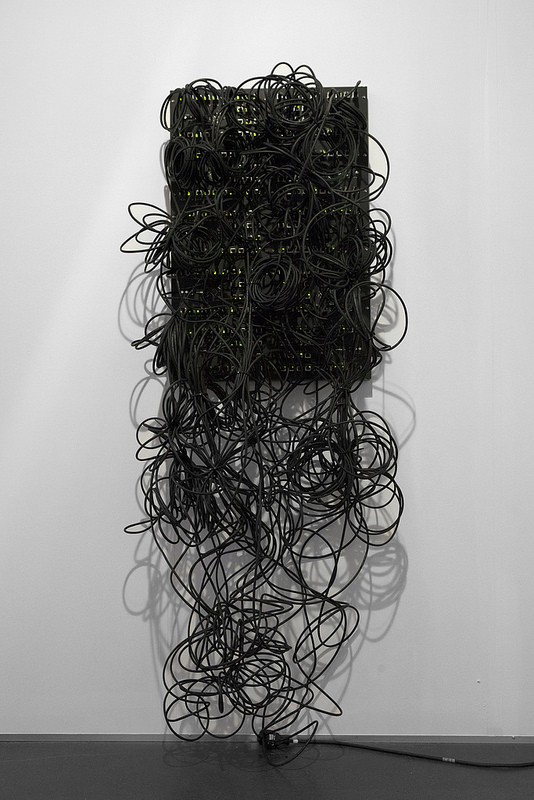According to her website, “Addie Wagenknecht is an American artist based in Austria, whose work explores the tension between expression and technology. She seeks to blend conceptual work with traditional forms of hacking and sculpture.” She succeeds in this endeavor. I asked Addie some questions about her artistic philosophy.

Artwork by Addie Wagenknecht.
Exolymph: Much of your body of work deals with surveillance, but I would go farther and say that you deal with the power differentials highlighted by acts of witnessing. Do you agree with that, or is it pseudo-intellectual bullshit? Either way, how do you feel about being watched?
Wagenknecht: Yes, I agree with that statement entirely.
Regarding being seen, being watched, there is a trauma to not being seen, as much as one exists for those being watched. Who is allowed in to the public sphere? Who is allowed to be visible? I have been reading a lot of research and papers on the implications of race/sex/religion within the canon of surveillance, as these factors serve as both a discursive and material practice of sociopolitical norms. Crypto is an inherently elitist technology; it is simply not available to people who are not highly fluent in their hardware and software bases. The more people outside of the hacker scene I teach these tools to, the more I believe how insanely secretive and elitist these so-called open protocols are.
Here is the thing: “public” has a reliance on the notion of a binary between private and public, visible and invisible space. This implies that we have spaces which are not part of this surveillance paradigm, but with the nature of smartphones being on everyone, everywhere, I am no longer convinced that this binary exists. “The personal is political” can also be read as saying, “The private is political.” Because everything we do in private is political: who we have sex with, what we eat, who does the cleaning, and so on…
Exolymph: How do you see your work evolving over time? What new themes interest you now?
Wagenknecht: I’d like to do more collaborative longer-term projects. I’ve started working with Peter Sunde on some small works which I hope we can release in the coming months, and also Quayola on interpretation of code as a visual entity.
My research in the last two months has been primarily about living in entirely man-made environments and the Internet of Things. The genesis of matter, the history of the earth, and how they are being reinterpreted as a form of speculated geology by the human race and the machines which we version-control that control us. I am also researching mineral composites, which would otherwise not be found in nature, to challenge definitions of “real”. I’m looking at how to play homage to the Western valuation of hyper-optimization by maximizing the believed properties of various specimens.
Exolymph: In general, what draws you to conceptual art? Why sculpture in particular? It’s interesting that you address digital realities in corporeal forms.
Wagenknecht: As artists, our role is to take complex ideas and encapsulate them in a way that society can parse. I want to subvert systems and objects in ways which people can hopefully better understand and reflect on why we need them at all.
Exolymph: What are you interested in building that you haven’t had a chance to do yet? What if you had unlimited resources?
Wagenknecht: I’d do more physical works that rely on fabricating with robotics and robotic arms, large-scale pieces, in materials like stone and metals. I also have some large-scale installations that I’ve been wanting to do forever and I’d get that list of works complete.
Exolymph: What have you downloaded that did get you in trouble? [I was referencing a piece that involves the sentence “I will not download things that get me in trouble” scrawled repeatedly across a wall.]
Wagenknecht: Ha! I’d prefer not to answer that.
Ways to get in touch with Addie Wagenknecht, as well as more examples of her artwork, are listed on her website.


Comments are closed.